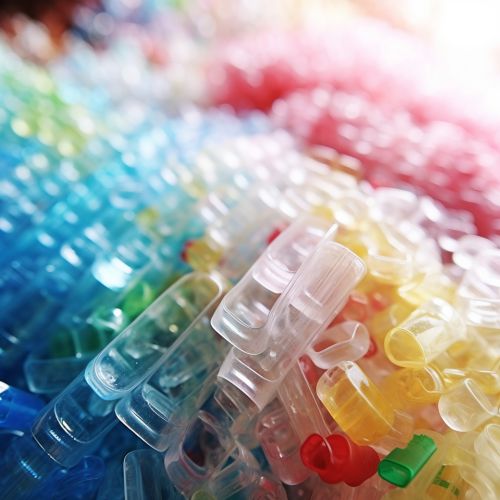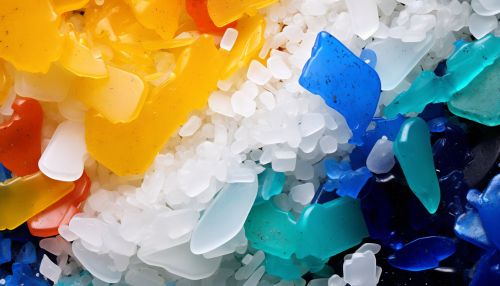Advances in Biodegradable Plastics
Introduction
Biodegradable plastics are a modern innovation in the field of materials science that have the potential to significantly reduce the environmental impact of plastic waste. These plastics are designed to degrade, or break down, when exposed to the environment over a period of time. This is in contrast to traditional plastics, which can take hundreds of years to degrade and are a major contributor to environmental pollution. Biodegradable plastics can be made from a variety of materials, including plant-based materials, and can be used in a wide range of applications, from packaging to medical devices.
History and Development
The concept of biodegradable plastics has been around for several decades, but it wasn't until the late 20th century that significant advances were made in this field. The first biodegradable plastics were developed in the 1970s and 1980s, but these early versions had significant limitations. They were often not fully biodegradable, and the process of degradation could take a long time. In addition, they were often more expensive to produce than traditional plastics, which limited their commercial viability.
In the 1990s and 2000s, advances in materials science and biotechnology led to the development of new types of biodegradable plastics. These new materials were more fully biodegradable and could degrade more quickly than their predecessors. In addition, advances in manufacturing technology made it possible to produce these plastics at a lower cost, making them more commercially viable.


Types of Biodegradable Plastics
There are several different types of biodegradable plastics, each with its own properties and potential applications. These include:
- Polylactic Acid (PLA): PLA is a type of biodegradable plastic that is made from fermented plant starch, usually from corn or sugarcane. It is one of the most commonly used types of biodegradable plastic, and is used in a wide range of applications, including packaging, disposable cutlery, and medical devices.
- Polyhydroxyalkanoates (PHA): PHAs are a family of biodegradable plastics that are produced by bacteria. They have a wide range of properties, depending on the specific type of PHA, and can be used in a variety of applications, from packaging to medical devices.
- Polybutylene Succinate (PBS): PBS is a type of biodegradable plastic that is made from succinic acid and 1,4-butanediol. It is a relatively new type of biodegradable plastic, but has shown promise in a variety of applications, including packaging and agricultural films.
Applications
Biodegradable plastics have a wide range of potential applications, and are already being used in a number of industries. Some of the most common applications include:
- Packaging: Biodegradable plastics are often used in packaging applications, including food packaging, beverage bottles, and shopping bags. These plastics can help to reduce the environmental impact of packaging waste, as they can degrade more quickly and fully than traditional plastics.
- Agriculture: In agriculture, biodegradable plastics can be used in a variety of applications, including mulch films, seed coatings, and controlled-release fertilizers. These plastics can help to reduce the environmental impact of agricultural waste, as they can degrade in the soil over time.
- Medical Devices: Biodegradable plastics are also used in a variety of medical applications, including sutures, drug delivery devices, and tissue engineering scaffolds. These plastics can degrade in the body over time, eliminating the need for surgical removal.
Environmental Impact
While biodegradable plastics have the potential to reduce the environmental impact of plastic waste, they are not a panacea. These plastics still require energy and resources to produce, and the process of degradation can release greenhouse gases. In addition, not all biodegradable plastics degrade fully or quickly in all environments. For example, some biodegradable plastics require industrial composting conditions to degrade fully, and may not degrade fully in a home compost pile or in the ocean.
However, despite these limitations, biodegradable plastics still represent a significant advance over traditional plastics. They can help to reduce the amount of plastic waste that ends up in landfills and in the environment, and can help to reduce the environmental impact of a variety of industries, from packaging to agriculture to medicine.
Future Directions
The field of biodegradable plastics is still evolving, and there are many exciting directions for future research and development. Some of the most promising areas of research include the development of new types of biodegradable plastics, improvements in the degradation properties of existing plastics, and advances in the production and manufacturing processes for these materials.
In addition, there is ongoing research into the environmental impact of biodegradable plastics, including studies on the degradation process, the release of greenhouse gases, and the impact on soil and water quality. This research will be critical in ensuring that biodegradable plastics are truly a sustainable alternative to traditional plastics.
